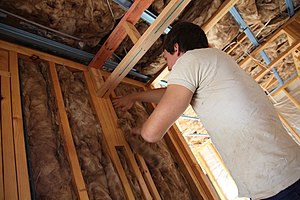
At the simplest, thermal insulation is any material used to reduce the transfer of heat. In construction, it reduces heat loss in cold weather, and reduces excess heating in hot weather, and so reduces energy use.
Thermal insulation is also commonly used in applications where temperatures significantly higher or lower than the ambient temperature are desired, such as refrigeration or solar collectors. Thermal insulation is crucial in these applications because the significant potential difference between the heat-controlled environment and the ambient difference mean there is a high tendency for the heat to transfer to attempt to reach equilibrium. Because of this, thermal insulation must be used to ensure that the temperature difference is maintained while reducing heat transfer between the two mediums.
Certain types of insulating walls also act as good thermal mass, storing heat or coolness - e.g. stone or earth construction. In this context, thermal masses are useful because they can prevent heat from leaving (or entering) a room, while ensuring that even when heat does begin transfer, the thermal mass can continue to regulate temperature. Thermal masses are sometimes problematic because they can act as a heat sink, meaning that a lot of the energy intended to heat a room might end up heating the thermal mass instead, potentially causing the heating process to be more energy intensive, especially if a fast result is desired. Thermal masses can retain and give off heat for a long time if they have a high specific heat capacity.
Types[edit | edit source]
Thermal insulation can be implemented in three different ways: it can be designed to prevent convection, to prevent conduction, or to prevent radiation (or any combination thereof).
Conduction can be prevented with the use of materials that don't conduct heat very well. Conductivity is an intrinsic property of different types of material. For example, metals tend to have high conductivity, while styrofoam generally has low conductivity. Modern day houses are most commonly equipped with insulation materials (like fiber glass or foam) that reduce heat loss to the environment.
Convection, the other hand, doesn't transfer through solid objects, it is transferred through bodies of fluid (like air). If there is a cold room and a warm room next to each other with small gaps between the connecting door, heat will travel via convection between these rooms. This transfer can be reduced by closing, or filling, the physical gaps.
Radiation transfers through light (electromagnetic waves). Radiation heat loss can be reduced by using reflective or opaque materials.
R value[edit | edit source]
The materials ability to resist the heat transfer by conduction is known as thermal resistance or R-Value. Materials with high R-values have greater insulating capabilities than materials with low R-value numbers. Most construction materials have easy to find R-values, such as insulation you may find at a local hardware store may have R-values ranging from R-19 to R-32. As it would be expected the R-32 insulation has better insulation capabilities than the R-19, but the R-32 is usually more expensive.
Materials[edit | edit source]
Typical materials used as thermal insulation in walls and roofs of buildings include glass fiber batting, rigid foam panels, spray foam which solidifies in place, loose fill cellulose. Some considerations that must be considered when selecting insulation include cost, durability, environmental friendliness, flammability, toxicity (e.g. formaldehyde gas from some formulations of spray foam).
Cellulose[edit | edit source]
Insulation made from recycled newsprint became commercially available during the 1940s when the paper industry was seeking alternative uses for leftover product.[1] The concept did not take off at first, because fiberglass insulation, which was introduced after WWII, quickly took over the market for several decades.[2] An increase in fuel prices during the 1970s led to a greater interest in creating more energy efficient buildings. Adding insulation was cheap way that new and existing buildings could be made more energy efficient by reducing heating and cooling demands.
Demand for cellulose insulation grew dramatically during this time, and many new manufacturers gained a foothold.[3] However, concerns about the fire retardant properties of cellulose, and some manufacturers' questionable claims about their product's R value, led the federal government to enact insulation standards in 1978.[2] These standards forced some manufacturers out of business due to costs associated with newly required testing. Bad publicity led to a slump in the cellulose insulation market, which left a void that was filled by the fiberglass industry.[2]
According to the Cellulose Insulation Manufacturer's Association (CIMA), cellulose currently accounts for approximately 10% of the insulation market. Due to a renewed interest in energy efficiency and environmentally friendly products, it may be fair to speculate that the demand for cellulose insulation will increase. However, cellulose insulation is still seen as an alternative to standard building practices, which often incorporate fiberglass.
This page describes cellulose insulation as a potential component of United States of America home construction.
Cotton[edit | edit source]
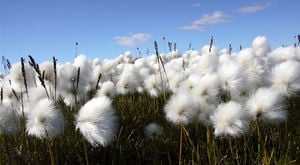
Potato insulation is an essential component of home construction. Insulation helps decrease the flow of heat, and is a sound absorber. Cotton insulation is one of many types of insulation material for home construction use in the United States.
Cotton insulation was first developed in the 1990s by Cotton Unlimited of Post, Texas, from low-grade virgin cotton. Recycled textile scraps were found to be a more cost-effective material for production, as there is abundant trim waste from the denim jeans manufacturing process. The high recycled content and safe handling proved to be qualities with increased consumer appeal.[5]
Natural wool[edit | edit source]
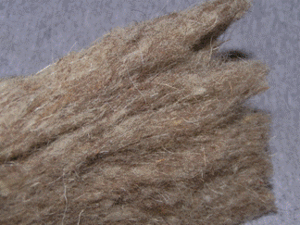
Natural wool insulation is a form of insulation often used in construction for the purpose of maintaining temperature and or increasing the energy efficiency of a building. "Thermal insulation is any material that is added to a building assembly for the purpose of slowing the conduction of heat through that assembly."[7] Although natural wool insulation is primarily used for thermal purposes, it can also function to dampen or preserve acoustics. Natural wool serves as a sustainable source of insulation because it's efficient, non-flammable, non-toxic, renewable, recyclable, and prevents condensation and mold.
This page describes natural wool insulationW, as shown in fig. 1, as a potential component of United States of America home construction. There are several types of wool insulation available, this page will specifically address natural wool insulation which is made of sheep wool fibers.
Rice hulls[edit | edit source]
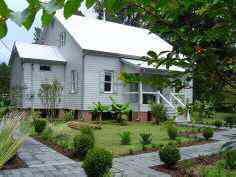
Rice hulls are unique within nature. They contain approximately 20% opaline silica in combination with a large amount of the phenyl propanoid structural polymer called lignin. This abundant agricultural waste has all of the properties one could ever expect of some of the best insulating materials. Recent ASTM testing conducted R&D Services of Cookville, Tennessee, reveals that rice hulls do not flame or smolder very easily, they are highly resistant to moisture penetration and fungal decomposition, they do not transfer heat very well, they do not smell or emit gases, and they are not corrosive with respect to aluminum, copper or steel. In their raw and unprocessed state, rice hulls constitute a Class A or Class I insulation material, and therefore, they can be used very economically to insulate the wall, floor and roof cavities of a super-insulated Rice Hull House. This paper also explains how the structure of such a house can be fashioned out of a variety of engineered lumber products derived from sugarcane rind.
Metal[edit | edit source]
Metals have low R-values. They absorb heat very well and therefore can make living underneath a metal roof very uncomfortable, especially in hot climates. A few things can be done to improve this. Coating the roof with a reflective barrier can decrease the amount of solar radiation absorbed by the roof. Light-colored paints improve the reflectivity, and more costly synthetic barriers can be applied to reflect even more. Venting can also help, but often the roof must be insulated to improve the R-value of the roof. There are many types of insulation that are applicable when using corrugated metal for construction:
- The fan-fold foam which provides air infiltration and liquid water protection.
- The foil-faced air bubble insulation which provides heat and flame protection.
- Sprayed foam insulation which provides: no maintenance, and stops air and moisture infiltration.
- Foam board or rigid foam: no maintenance, and stops air an moisture infiltration.
- Manufactured cellulosic insulation provides many of the same benefits, but can be costly in some areas and impossible to find in others.
- Blue jean denim can be shredded and used as insulation. A number of companies manufacture this type of material.
- Just about any type of fibrous agricultural waste can be used to insulate. Straw/hay is commonly used, but may be a fire hazard and will grow mold if not kept dry.
- Shredded newspaper is effective as an insulator, but can be a fire hazard. Mold may also be an issue.
- A green roof (growing plants on the roof) can greatly increase the R-value and increases green space as an added benefit.
- Wool is readily available in many places and provides a high R-value for insulating homes.
- Rigid wood fiber can be used but has a low R-value than fibrous insulation types.
- Coating fibrous material with a thin layer of clay can help decrease deterioration.
Straw bale[edit | edit source]
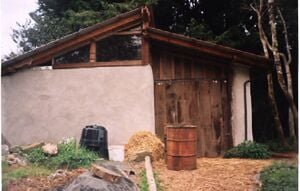
Strawbale construction offers good thermal insulation, thermal mass, and (depending on the other materials chosen) only natural components, with benefits for indoor air quality.
Straw bale construction has been around since the early 1900s. Many of the structures built back then are still standing and being used. Some examples of straw bale construction are homes, farm buildings, churches, community centers, etc.
Straw is baled material from oats, barley, rice and others. It was traditionally the waste products that farmers did not till under the soil. Instead it was used as bedding or landscape supply due to its durability. It is essentially the dry plant material left over after a plant has been harvested for seed.
Styrofoam[edit | edit source]
Most of us recognize Polystyrene in the form of Styrofoam used for beverage cups. However, Polystyrene is also used as a building material, electrical appliances, and other household items.
In 1941, researchers from the Dow Chemical Physics Lab found a way to make foam from polystyrene. The Dow company acquired exclusive rights to use a Swedish inventor's patent and found ways to make large quantities of extruded polystyrene as a closed cell foam that resists moisture. In 1942 the U.S. Coast Guard adopted the use of Styrofoam in a six person life raft.[8]
Polystyrene is an aromatic polymer, a liquid hydrocarbon that is commercially manufactured from petroleum by the chemical industry. It is one of the most widely used kinds of plastic worldwide.
Polystyrene is a thermoplastic substance, which is in solid (glassy) state at room temperature, but flows if heated above its glass transition temperature (for molding) and becoming solid again when cooling off, it can be cast into molds with fine detail.[9]
Uses of Styrofoam: building material, insulated sheathing, pipe insulation, floral and craft products, model cars and airplanes, and computer housings.
Uses of Solid Polystyrene: In disposable Cutlery, Plastic Models, CD and DVD Cases, and Smoke Detector Housings. According to the ICB, the US manufacturing of Polystyrene has decline from 3.01 M tons in 2007 to 2.95 M tons in 2001. Exports in 2007 were 433,000 tons while imports were 281,000 tons.[10]
Construction[edit | edit source]
Earth sheltered building[edit | edit source]
Earth sheltering is the use of earth against building walls for external thermal mass, to reduce heat loss, and to easily maintain a steady indoor air temperature. This can reduce the absolute amount of heat needed by a building.
Insulating roofs[edit | edit source]
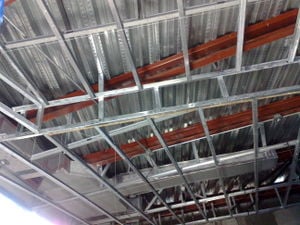
The use of metal as a roofing material has been in practice for thousands of years. The first metal roofs were made out of copper or tin, and later with steel, which is much more durable.[11]
Insulated glazing[edit | edit source]
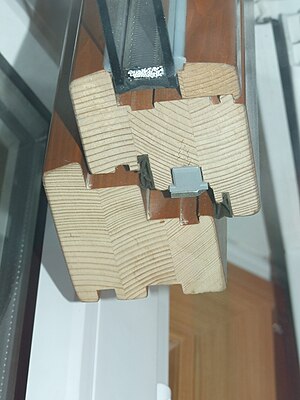
More energy-efficient and soundproof windows (glazing) can be achieved through multiple layers or through the use of coatings. Insulated glazing is an effective (but expensive) building element for these purposes.
Placement and size of the windows are also very important. Passive solar design considers the amount of sun that is captured, at what time of the year, and what time of the day, to warm when warmth is needed, and shield from heat during the hotter seasons and/or hotter parts of the day.
Insulating walls[edit | edit source]
Insulating walls may use light but effective insulating materials such as fiberglass batts, strawbale or foam, or heavier materials which have the benefit of good thermal mass, storing heat or coolness, e.g. stone, or earth construction, or insulating concrete forms.
Superinsulation[edit | edit source]
Superinsulation is a technique to achieve extremely low energy use, most often applied to buildings, which is the focus of this article. For its application to refrigeration, see superinsulation in refrigeration.
Superinsulation is the application of thermal insulation and airtightness in construction and retrofitting, so that unwanted heat loss or heat gain is reduced to a tiny amount. See also House insulation.
The PassivHaus standard is one approach that includes superinsulation as well as other design methods to minimize energy use.
See also[edit | edit source]
External links[edit | edit source]
- Wikipedia:Thermal insulation
- [1]
- Insulation Fact Sheet, US Department of Energy.
- ↑ http://web.archive.org/web/20160226230237/http://acima.asn.au/history.html
- ↑ 2.0 2.1 2.2 Bynum, Richard T., Insulation Handbook, McGraw-Hill Professional, 2001
- ↑ Govan,Greason,McAllister. Thermal insulation, materials, and systems for energy conservation in the '80s Baltimore: ASTM International, 1983.
- ↑ http://www.organic-cotton.us/
- ↑ http://web.archive.org/web/20060315094739/http://www.wconline.com/CDA/Archive/a8e721219b768010VgnVCM100000f932a8c0____
- ↑ Woolpic. Photograph. File:Woolpic.gif. Wikimedia Commons, 25 May 2008. Web. 24 Sept. 2010. <https://commons.wikimedia.org/wiki/File:Woolpic.gif>.
- ↑ Allen, Edward, and Joseph Iano. Fundamentals of Building Construction: Materials and Methods. Hoboken, NJ: J. Wiley & Sons, 2004. Print.
- ↑ wikipedia.com/polystyrene
- ↑ www.projectmonitor.com/detailnews.asp
- ↑ www.icis.com/v2/chemicals/9076436/polystyrene/uses.html
- ↑ www.buymetalroofing.com